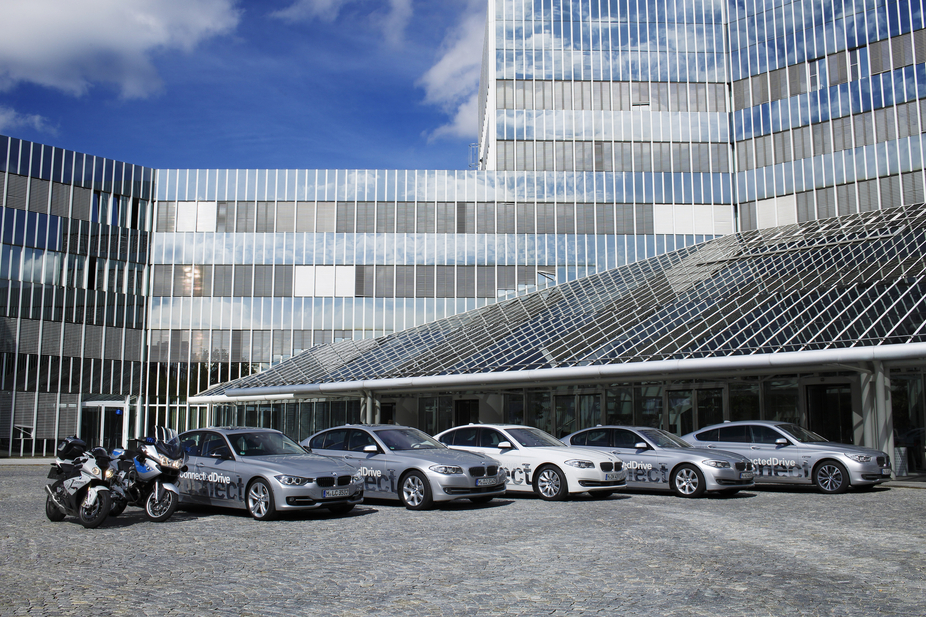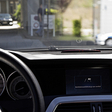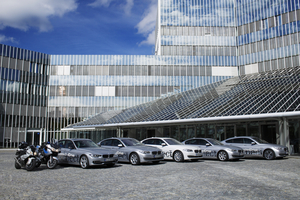|
Send this page to a friend! Fill in the form bellow | ||
news
German Automakers Readying Car-to-X Tech for Their Cars
It calls the pilot project simTD
Mercedes-Benz Mercedes-BenzGermany, 1924 > present197 models
Mercedes-BenzGermany, 1924 > present197 models
9852 photos
33 videos
announced earlier this week that it will have Car-to-X technology in its cars available by the end of the year. BMW BMWGermany, 1918 > present87 models
BMWGermany, 1918 > present87 models
8471 photos
43 videos
, Audi AudiGermany, 1909 > present83 models
AudiGermany, 1909 > present83 models
8213 photos
27 videos
, Ford FordUnited Kingdom, 1909 > present33 models
FordUnited Kingdom, 1909 > present33 models
3718 photos
5 videos
and Opel OpelGermany, 1863 > present85 models
OpelGermany, 1863 > present85 models
5151 photos
8 videos
have just completed their own four-year testing program for the technology for their cars with the city of Frankfurt am Main and universities. The program was called simTD.
Car-to-X technology allows vehicles to communicate among each other and with the infrastructure. The simTD solution uses wireless LAN and mobile network connections to communicate.
BMW had 20 cars and five motorcycles involved in the test over four years, and Audi and Ford had 20 vehicles each. There were 120 vehicles involved in the test in total.
BMW’s part in the test was to develop Cross Traffic Assistant and Traffic Sign Assistant.
Cross Traffic Assistant receives data from local vehicles to know if vehicles will be crossing the driver’s path. A warning lights up when it detects danger.
“The system evaluates all incoming data, such as the speed, distance from the intersection and direction of travel of other road users, along with information generated by the driver’s own vehicle. If the driver does not react to an intersecting vehicle, he will be warned by visual as well as acoustic signals,” said Dr. Christoph Grote, BMW head of research and technology.
Traffic Sign Assistant uses information from the infrastructure to alert drivers to road signs and approaching traffic lights. It can suggest the correct speed so that the driver can hit a succession of green lights.
It also receives data on traffic accidents, upcoming stopped traffic and dangerous road conditions.
Audi developed a traffic light info system for the project. It installed sensors in 20 traffic lights in Frankfurt. The cars and lights talked to each other to bring the average speed of traffic as high as possible.
It then took the technology a step further and removed the sensors from the traffic lights and only had the cars communicate with each other.
The project found that more efficient use of traffic lights reduced CO2 emissions by 15% and save 900 million liters (237.75 million US gallons) of fuel a year.
Opel worked on a weather warning system that embedded road weather stations at the roadside. They surveyed the weather conditions and sent that data to traffic. If they sensed dangerous weather, then a warning appeared in the cars.
Ford created a car-to-car warning system to warn drivers of cars braking ahead. Ford calls the tech Electronic Brake Light. When a line of cars begin braking, a warning is sent to the vehicles coming up to the stopped cars
None of the automakers other than Mercedes have said when these technologies will be ready for production cars.
Encyclopedia |
Contribute
more about BMW



latest news











